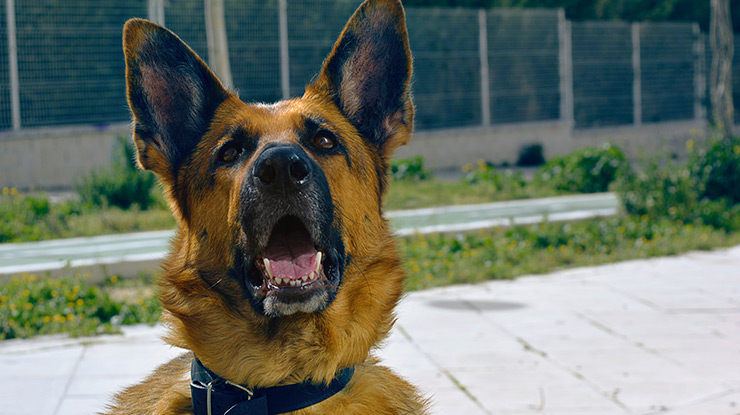
12 Dominance Myths You Should Never Fall For
Dogs are not engaged in a dominance war with humans. They’re just being dogs. Habits become behavior, and dogs will act the way they’ve been trained or allowed to act. So what’s the truth behind the so-called “dominant” canine behaviors that some TV personalities talk about?

Myth 1: My dog barks to show he’s boss.
Nope. Excessive barking can be a sign of boredom or anxiety. You might also be unintentionally reinforcing the behavior by giving him attention while he’s barking. Don’t respond with attention when he’s in a barking fit and consider putting his bark on cue with speak and quiet.
Myth 2: My dog counter-surfs because he thinks he’s in charge.
Rubbish. Dogs have learned to scavenge available food. If he’s bored, hungry, or poorly trained, food left on the counter is free game. Set up physical boundaries to keep him out of the kitchen and don’t leave unattended food where it can tempt him.
Myth 3: My dog ignores when I call him because he’s proving he owns himself.
By no means. Have you trained the "come" command consistently? Train using a bigger reward for successful comes.
Myth 4: My dog jumps up and on people to show he’s above humans.
No way, José. Dogs usually jump for attention or out of overexcitement, and many owners unintentionally reinforce jumping by giving the dog attention during the behavior. Redirect that energy with training. Require sit or down before greeting or sitting with people.
Myth 5: My dog pulls on the leash because he’s proving that he’s the leader.
Negative. Leash-pullers are usually victims of poor training and overexcitement. Don’t move forward in the walk if the leash is taut. Require a slack leash before taking each step. Be consistent. It’ll be stop-and-go for a while, but he’ll eventually realize that pulling gets him nowhere/

Myth 6: Positive training is bribery.
Preposterous. Positive training starts with consistent reward, which fades to random reward, and eventually is exchanged for real-life rewards (sit before dinner, sit-stay before going outside). Reward promotes repetition until behavior becomes habit.
MYTH 7: Dogs are ESSENTIALLY the same as wolves.
Yes, dogs and wolves share much in common, especially when it comes to their physical makeups. But the thousands of years dogs have spent with humans have fundamentally changed their attitudes and behaviors, so mentally they are very different animals.
For example, when dogs and wolves are faced with a food puzzle, dogs may look rely on a nearby human for help or even pick up on clues gathered from the person’s gestures, such as pointing, while wolves will not look to a human for help. So, if someone tells you dogs are basically wolves at heart, you know it’s bunk.
Myth 8: Physical and mental intimidation are necessary parts of the training process.
If you are using physical and mental intimidation tactics to convince your dog that you’re the alpha of the pack, there’s a good chance that you could be doing damage to both your dog and your relationship with your dog. If you hurt or frighten your dog, especially at an impressionable age, it can cause the dog to develop negative attitudes toward you that will be long lasting.
Naturally, if you act in an aggressive manner towards a dog, that dog is less likely to consider you trustworthy and more likely to consider you a potential threat. And, if a dog feels that its life is threatened, fear may cause an otherwise peaceful dog to lash out in response.
Myth 9: My dog jumps on furniture to claim territory.
Of course not. The sofa’s probably more comfortable than the floor. View this as an opportunity to train on and off. Don’t confuse jumping on furniture with resource guarding. Insecure dogs will guard resources out of fear. (Fear produces aggression.) If your dog is resource guarding, address the fear root first. Training the on-off cues will help, but start with a big paycheck. (Wet food is always a hit.)
Myth 10: My dog walks through the doorway first to show he’s the alpha.
Nope. This is an opportunity to train wait, heel, or a sit-stay. Require one of those cues before you allow him to walk through the doorway.
Myth 11: My dog mounts to show his dominance.
Not at all. Mounting (apart from procreation) is part of play and a way to release stress. During play, well-socialized dogs reciprocate roles and behavior, including mounting.
Myth 12: Positive training is permissive.
Totally bogus. Positive training is not for the lazy. It takes forethought and consistency to set clear, firm boundaries and to follow through with reward or removal of the reward. Positive training is equal parts patience, timing, and good technique.



















